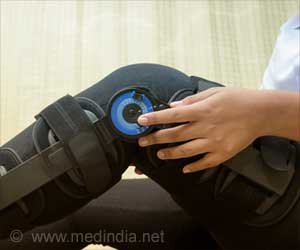Teaching hospitals achieve lower mortality rates with a higher intensity of physician-training activity, but higher hospitalization readmission rates for key medical diagnoses.

The disparity in readmissions is greatest for "safety-net" hospitals serving low-income populations, according to the new research led by Dr Stephanie K. Mueller of Brigham and Women's Hospital, Boston. They write, "These findings suggest that high teaching intensity and safety-net institutions may be disproportionately affected by recent and upcoming changes in hospital payment models."
Variations in Outcomes at Higher-Intensity Teaching Hospitals Using two nationally representative databases, the researchers evaluated the relationship between hospital teaching status, the quality of care provided, the patients outcomes achieved. Teaching hospitals—those which train medical residents—were classified by teaching intensity, based on the ratio of residents to patient beds.
The study focused on three conditions widely used in assessing the quality and outcomes of hospital care: acute myocardial infarction (heart attack), congestive heart failure, and pneumonia. In addition to teaching status, the researchers looked for possible differences in quality of care at safety-net hospitals—those treating a high proportion of Medicaid patients.
The study included data on 2,418 hospitals for the years 2007-08. Overall, 37 percent of hospitals were teaching hospitals. Five percent were medium-intensity and three percent were high-intensity teaching hospitals.
The teaching and nonteaching hospitals performed "uniformly well" on quality of care process measures. This meant that they had high rates of performing and reporting recommended care steps for all three diagnoses.
In contrast, for myocardial infarction and heart failure, high-intensity teaching hospitals had lower mortality rates than nonteaching hospitals. The differences in outcomes remained significant after adjustment for patient risk factors.
Traditionally, teaching hospitals have been supported by a combination of patient revenues and government subsidies. Pressures to reduce government support for medical education pose a threat to the financial health of teaching institutions. Many teaching hospitals are also safety-net hospitals, which serve higher-risk patients. As a result they may also take a financial hit from new payment rules penalizing hospitals with higher readmission rates.
The new study suggests that teaching hospitals—especially higher-intensity teaching hospitals that are also safety-net hospitals—have higher readmission rates for key diagnoses. This is despite the fact that they have lower mortality rates for major heart disease diagnoses.
How to explain this seeming contradiction? Lack of patient education at discharge may contribute to higher readmission rates at teaching hospitals. Another possibility is that patients with more complex conditions treated at teaching hospitals are more likely survive—and more likely to return for care requiring rehospitalization.
The study raises important questions about how changes in hospital payment based on quality and outcome measures may affect funding of teaching hospitals, Dr Mueller believes. She comments, "Financial incentives may disproportionately impact the financial health of higher teaching intensity hospitals and safety net hospitals, particularly with respect to penalties for higher readmission rates."
Source-Eurekalert
 MEDINDIA
MEDINDIA




 Email
Email




